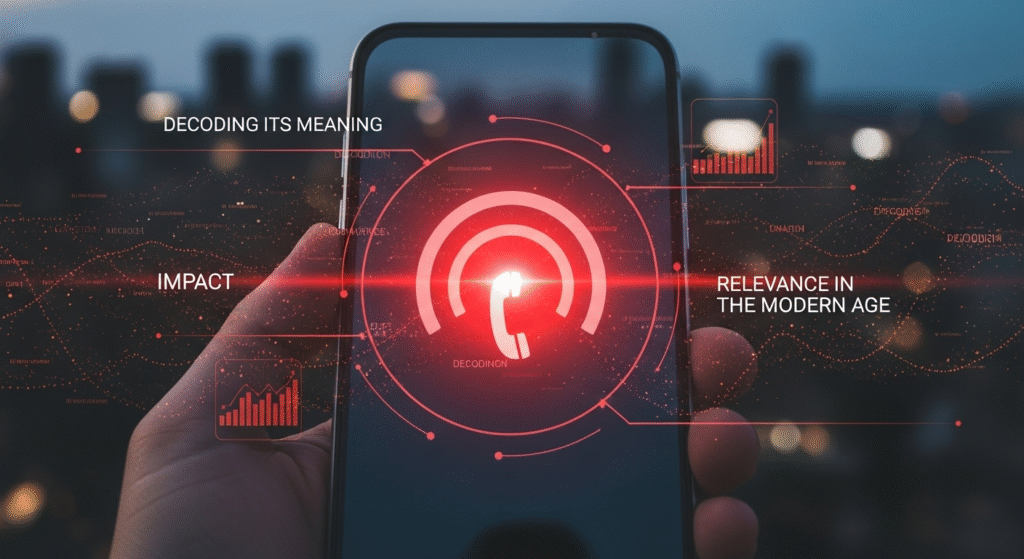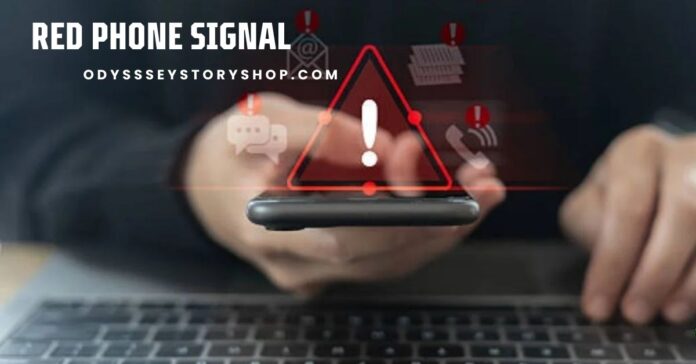The “red phone signal” is a term that has gained significant attention, especially in emergency communication systems and high-priority networks. While the concept of a red phone might conjure up images of emergency communication tools, the “red phone signal” has a far broader scope in telecommunications and digital communication. In this comprehensive guide, we will explore the importance, functionality, and various uses of the red phone signal, as well as address frequently asked questions to provide a clearer understanding of this unique signal.
What is the Red Phone Signal?
The red phone signal refers to a priority telecommunications signal that enables high-priority communication, typically in emergency or critical situations. It is used to bypass the usual network congestion or delays, ensuring that urgent messages are transmitted and received without hindrance. Historically, this signal has been used for communications that require immediate attention, such as emergency services, government agencies, and military operations.

The Evolution of the Red Phone Signal
The red phone, originally a physical device, became a symbol of secure and immediate communication, particularly during the Cold War era. It was famously used to establish a direct line of communication between the United States and the Soviet Union. While the physical red phone has become somewhat obsolete with modern technology, the concept of the red phone signal has evolved to include a variety of digital and networked communication systems.
Also Read: RemixPapa MSW: Revolutionizing the Creative Community
Today, the red phone signal is more symbolic of priority service on digital networks than the device itself. This signal ensures that certain communications are prioritized, even during times of high network demand.
How Does the Red Phone Signal Work?
The red phone signal works by prioritizing specific calls or messages, ensuring they go through even when the network is congested. The signal is typically routed through dedicated, secure lines or channels, which guarantees quick transmission. In telecommunications, this can be achieved using various methods such as:
- Dedicated Lines: In certain cases, the red phone signal may use a dedicated communication line that is always available for high-priority calls.
- Network Prioritization: Modern telecommunications systems allow for prioritization of certain calls based on their urgency or importance. This is particularly relevant in mobile phone networks and emergency communication systems.
- Emergency Protocols: Emergency services, including fire departments and law enforcement, often have dedicated red phone lines that automatically prioritize their calls, bypassing regular traffic.
The Technology Behind the Red Phone Signal
While early red phone signals were essentially secure physical connections, today’s technology integrates more advanced systems. Some of the key technologies enabling the red phone signal include:
- QoS (Quality of Service): QoS is a technique used to manage network traffic to ensure that critical data, such as emergency communications, are given priority.
- 5G and LTE Networks: Modern mobile networks, such as 5G and LTE, have evolved to support high-priority calls and messages. These networks incorporate mechanisms to prioritize emergency communications.
- Satellite Communication: In cases where traditional telecommunications infrastructure is unavailable, satellite phones or communication systems equipped with priority signals can be used.
Red Phone Signal in Emergency Situations
The red phone signal plays a crucial role in emergency situations, ensuring that critical communications are handled with utmost urgency. For example, emergency responders often rely on a red phone signal to quickly contact hospitals, fire departments, or other first responders during disasters or urgent situations.
Use in Public Safety Networks
Public safety networks are often equipped with red phone signals that ensure fast and reliable communication during a crisis. These networks are designed to minimize delays and congestion, which is critical during emergencies when every second counts.
Military and Government Use
In military and governmental contexts, the red phone signal remains an important tool for ensuring communication between senior officials and agencies during critical times. For instance, government agencies and military forces use dedicated secure lines, often referred to as the red phone, to ensure that messages are transmitted quickly and without disruption.
Also Read: OdysseyStoryShop A Guide to Exploring the World with Insight and Adventure
Red Phone Signal in Telecommunication Networks
Modern telecom networks also incorporate red phone signals to support high-priority communications. Telecom companies use various techniques to ensure that emergency calls or other important communications are processed without delay, including:
- Call Prioritization: Mobile phone carriers may prioritize emergency calls over regular calls, especially in disaster-stricken areas.
- Dedicated Emergency Lines: In some cases, telecom companies provide dedicated emergency lines that are not affected by network congestion, ensuring critical calls are always answered.
Red Phone Signal in International Relations
International diplomacy has also seen the use of the red phone signal, most notably during the Cold War. The infamous “red phone” between the U.S. and the Soviet Union was a direct communication line designed to avoid misunderstandings and facilitate quick action during tense times. While the use of this red phone has evolved, the concept of direct communication lines in high-stakes diplomacy remains relevant today.
Common Uses of the Red Phone Signal
While the red phone signal is often associated with emergency situations, its uses extend far beyond that. Here are some of the key applications:
- Medical Emergency Communications:
Hospitals and medical centers often use red phone signals to prioritize communication with paramedics, ambulance services, and other emergency responders. - Government and Military Communication:
High-level government officials use the red phone signal to communicate with each other during crises. This includes scenarios where national security or critical operations are at risk. - Corporate Crisis Management:
Corporations may use red phone lines or signals to ensure that their leadership can communicate without delay during crises or business disruptions. - Disaster Management:
In the event of natural disasters, emergency responders rely on red phone signals to coordinate rescue efforts and share critical information without interference. - Diplomatic and International Relations:
Countries may maintain secure, high-priority communication channels for handling sensitive diplomatic matters, often involving heads of state or key decision-makers.
Challenges Associated with Red Phone Signals
While red phone signals are essential for high-priority communications, they come with a few challenges:
- Network Congestion: In rare instances, even red phone signals can experience congestion, especially when multiple emergency services need to use the same line simultaneously.
- Security Concerns: As red phone signals are often used for sensitive communication, ensuring their security is paramount. This includes protecting against cyberattacks and interception.
- Cost and Maintenance: Maintaining dedicated lines or advanced technologies for red phone signals can be costly, requiring significant investment in infrastructure and ongoing maintenance.
- Also Read: Photeeq Lens Flare: A Comprehensive Guide
FAQs About Red Phone Signals
What is the Red Phone Signal used for?
The red phone signal is used for prioritizing emergency communications, such as those used by first responders, government officials, and military personnel. It ensures that critical communications are transmitted without delay, even during times of network congestion.
Is the Red Phone Signal still in use today?
Yes, the concept of the red phone signal is still in use today, albeit in more modern forms. While the physical red phone is largely obsolete, the priority communication systems that it symbolized are still used in various forms, including digital and satellite communications.
Who uses the Red Phone Signal?
The red phone signal is primarily used by emergency services, government agencies, military personnel, and diplomats. It is also used by corporations for crisis management and by healthcare providers to ensure fast communication during medical emergencies.
How do Red Phone Signals work in mobile networks?
In mobile networks, the red phone signal is implemented using network prioritization methods such as Quality of Service (QoS). These methods ensure that emergency communications are given priority over regular calls, even in congested networks.
Can a Red Phone Signal be hacked?
While the red phone signal is designed to be secure, no communication system is entirely immune to hacking. However, red phone signals are often encrypted and protected by advanced security protocols to minimize the risk of unauthorized access.
Conclusion
The red phone signal, a symbol of high-priority communication, continues to play a critical role in various sectors, from emergency services to international diplomacy. While its physical form may have evolved, the essence of the red phone remains: ensuring that urgent messages are transmitted quickly and securely. As technology advances, the red phone signal’s role in providing critical communication will only grow more important, helping to safeguard lives and manage crises effectively.
By understanding the red phone signal’s history, functionality, and modern applications, we gain a better appreciation for the systems that keep our world connected in times of need.

